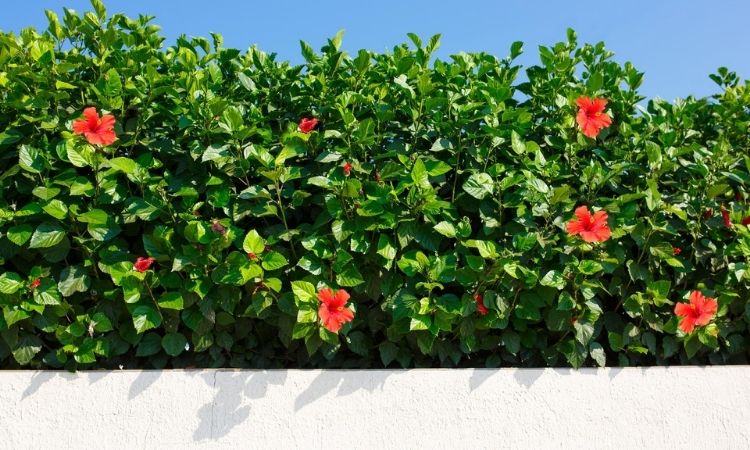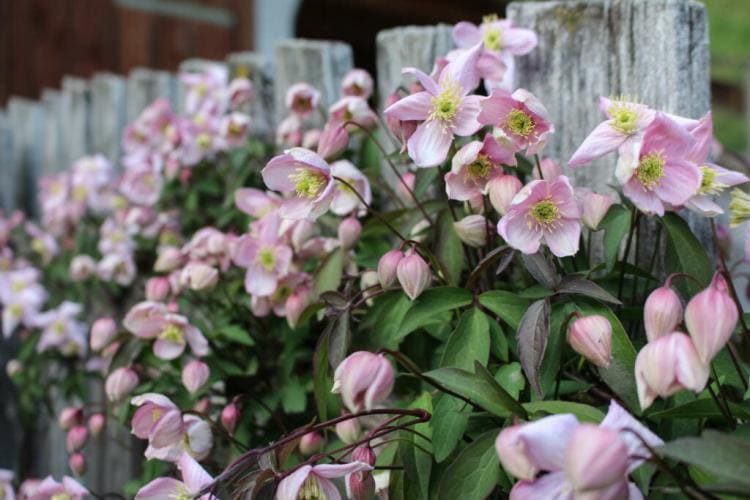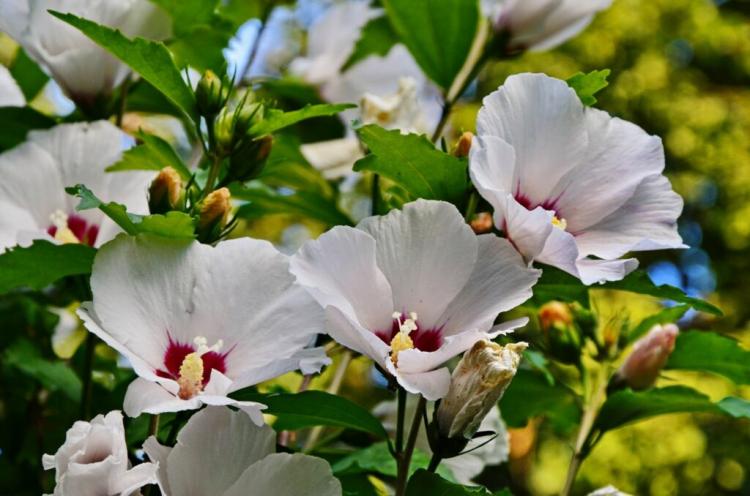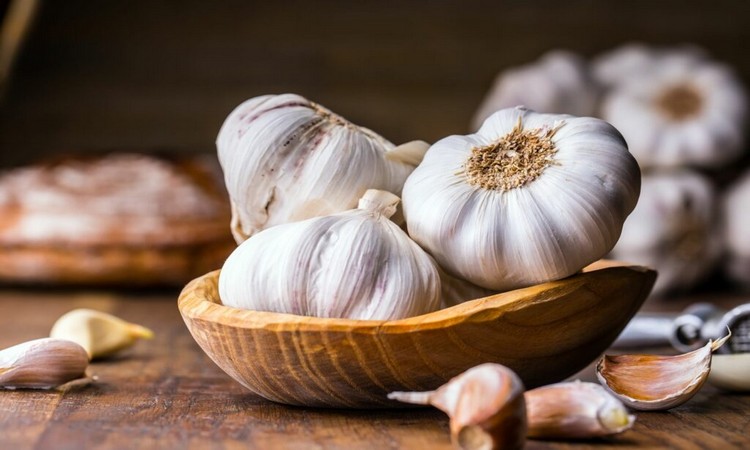Hibiscus Hedge: Tips On Choosing Varieties, Planting & Care
With hibiscus is very easy to achieve a great privacy screen. We give tips on suitable varieties and the correct pruning of a hibiscus hedge. Hibiscus blooms from June in the most beautiful colors. Whether blue, white, or pink – the variety of hibiscus is large and some varieties are even suitable for creating a hedge. Hibiscus hedges not only bring a colorful variety to your garden but also provide a good privacy screen.
To ensure that a hibiscus hedge soon decorates your garden, you only need to follow a few tricks. Which varieties are suitable for a hedge, how to create a hibiscus hedge and how to care for it, you will learn in this article.
Hedges in the garden does not always have to be green. The best proof of the opposite is provided by the hibiscus: with its colorful flowers, it brings color into our gardens and, as a hedge, also provides a habitat for many insects and birds. The hibiscus, which originates from Asia, belongs to the mallow family (Malvaceae). Hibiscus plants are fast-growing and their dense foliage provides optimum protection against unwanted glances. In addition, the low demands of hibiscus and its high pruning tolerance make it an ideal hedge plant.
Hibiscus Hedge: Suitable Varieties
Table of Contents
The variety of hibiscus is large. However, not all hibiscus species are well suited for a hedge. Since the hibiscus hedge lasts all year in the open ground, the hibiscus variety for a hedge must definitely be frost resistant. For example, the garden marshmallow (Hibiscus syriacus) is particularly suitable for a hibiscus hedge. However, varieties of almond marshmallow (Hibiscus mutabilis) can also be used for a hedge. Both species can grow up to two meters high and are very tolerant of pruning. Below we have collected some hardy varieties that are particularly suitable for a hibiscus hedge.
Varieties Of Garden Hibiscus For A Hedge
- ‘Blue Bird‘: this variety bears large blue flowers early in the year. It is vigorous in growth and particularly hardy.
- ‘Duc de Brabant‘: This hibiscus variety grows tall, bushy, and can reach three feet in height. The funnel-shaped flowers shade from dark red to blue-red and bloom from July to October.
- ‘Russian Violet‘: The cultivar ‘Russian Violet’ is also very vigorous. The flowers are pink to reddish-purple. Flowering time is from July to early October.
Varieties of almond hibiscus for a hedge:
- ‘Shanghai Pink‘: This is a hardy variety with a rich bloom of pink to dark pink. The hibiscus is hardy down to -73 °F.
- ‘Double‘: This variety is vigorous and bushy. The flower color changes from white to pink to red.
A comprehensive overview of the rich variety of hibiscus can be found here.
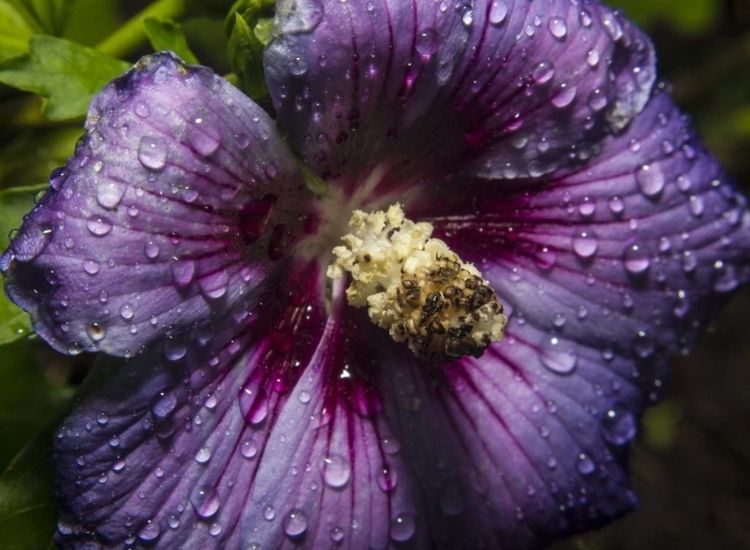
Planting A Hibiscus Hedge
Hibiscus hedges, like hibiscus specimen plants, prefer a sunny to semi-shady location sheltered from the wind. Hibiscus hedges prefer to grow in well-drained, nutrient-rich soil. A nutrient-poor soil can be enriched with humus-rich potting soil or compost. The optimal time for planting is in spring, as soon as the frost is no longer expected (a good guideline is the Ice Saints in mid-May).
The course of the planned hedge is best marked with a string before planting. The planting distance between the plants should be 23″ so that your hedge will be nice and dense. You can either dig a separate planting hole for each plant or make a trench about 19″ deep along the entire length of the hedge. Then plant the plants and water them well.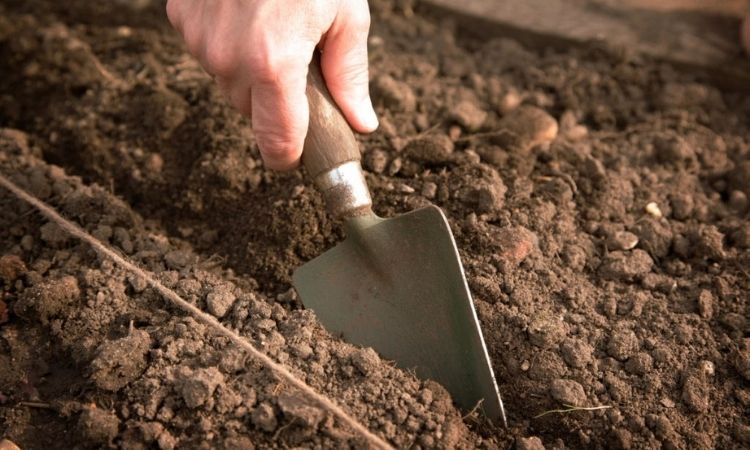
Summary planting hibiscus hedges:
- Location: Sunny and protected from the wind.
- Substrate: Well-drained and nutrient-rich
- Planting distance: 23″
- Planting depth: 19″
Maintaining A Hibiscus Hedge
Even though hibiscus hedges are considered low maintenance, you should not neglect yours and care for it regularly. Caring for hibiscus includes, first and foremost, watering. It is best to keep freshly planted hibiscus hedges constantly moist for two weeks. If the hibiscus is too dry, it will quickly react by dropping leaves. At the latest, you should take drooping leaves as a sign to water quickly and thus protect your hibiscus hedge from drying out.
In the spring you can regularly strengthen your hedge with fertilizer. In this case, an organic fertilizer slowly releases the nutrients to the plants and supports a healthy soil life. For hibiscus hedges, for example, is suitable, which consists mainly of plant source materials. If you discover signs of disease or pests, it is better to remove the affected parts of the plant immediately. This way, diseases or pests cannot spread to the entire hedge.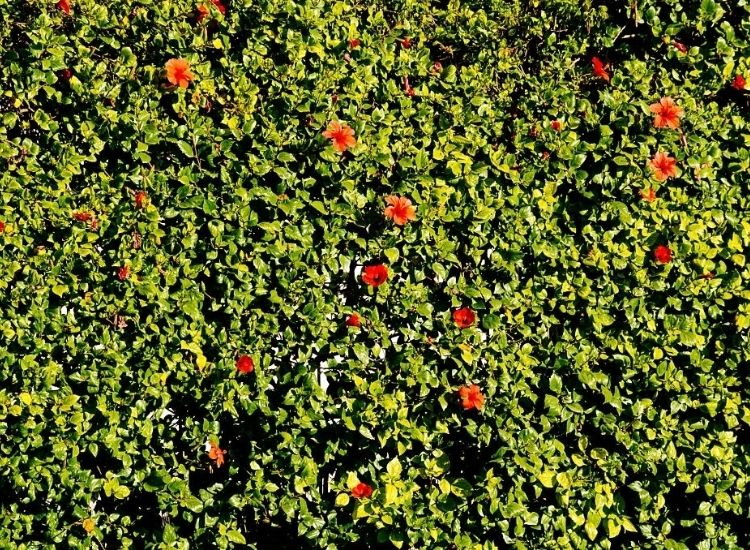
Summary Care hibiscus hedges:
- Keep consistently moist after planting
- Water regularly thereafter
- Fertilize in spring
- Immediately remove diseased/infested plant parts
You can find out what else to look out for when caring for hibiscus in our special article.
Pruning Hibiscus Hedge
The vigorous growth of your hibiscus hedge means that it will need to be pruned back annually. This topiary conditions a compact growth and encourages flowering. The ideal time to trim your hibiscus hedge is in the spring before the leaves begin to emerge. Cut your hedge back by a good third. Frozen and damaged branches can also be cut off. Diseased or pest-infested branches and dead shoots should be removed throughout the year.
Summary Prune hibiscus hedges:
- Cut back by one-third in spring
- Flowers develop on one-year-old shoots
- Remove diseased and dead shoots throughout the year
For more exciting plants that are also great for a flowering hedge, check out our article on plants as privacy screens here.
